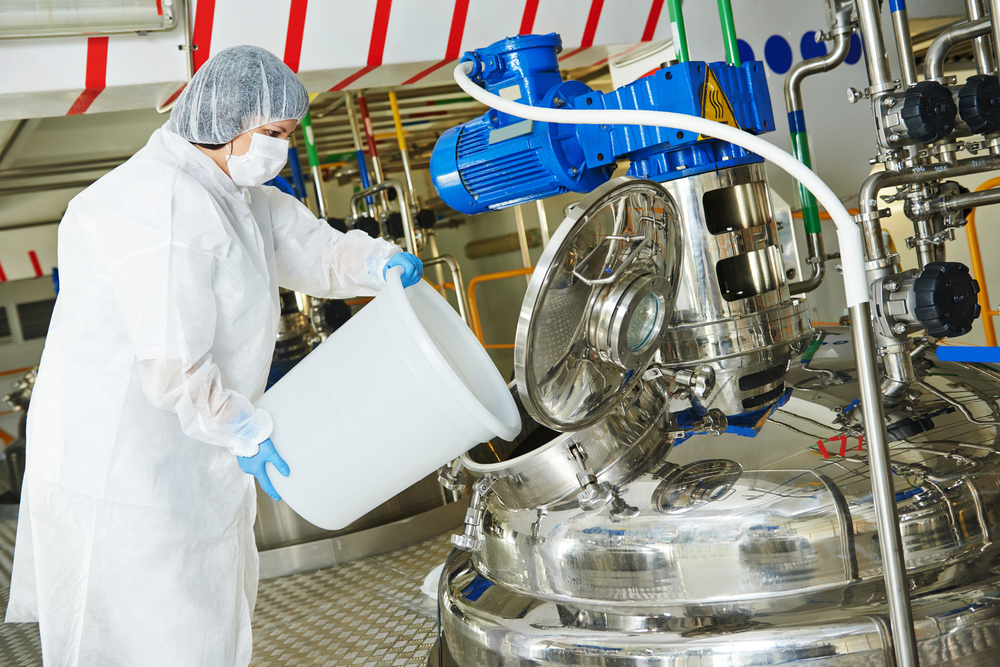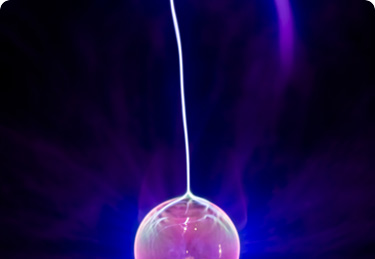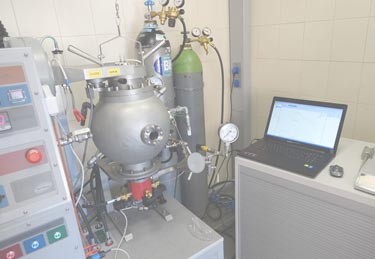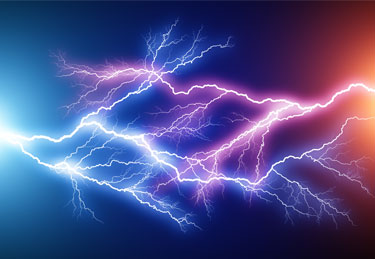Search
Manually Transferring Powders: Explosion Risk Explained

Operators add small quantities of powders to process vessels in many different ways. Pouring from bags or drums, scooping, tipping…. ; they use plastic drums, fiberboard drums, metal drums…; they have plastic liners and bags, paper bags and hybrid bags… All of this is commonplace stuff in the process industries; in chemicals, food and beverage, pharmaceutical, flavor and fragrance, plastics and resins and many more.
In this article, we describe one specific case of an explosion caused when an operator, adding powder to a vessel from a sack, was badly burned. We then generalize the lessons learned to help YOU avoid fires and explosions caused by static electricity during the addition of powders to process vessels at YOUR facility.
First the case study….
The task at hand for the operator [ref 1] was to add a fine plastic powder from sacks into a conical screw mixer. The job involved removing shrink-wrapping from pallets where the sacks were located and then, one by one, emptying the sack contents down a chute and into the mixer. Dust extraction was provided to the cute to reduce powder escape to the work area.
On the day in question, the operator had loaded a few bags of powder into the chute when an explosion occurred at the charge station which left him with severe burns to his face and upper body.
Readers of previous editions of “Stonehouse Process Safety Dispatch” may now be thinking “electrostatics”; so here is a little more information to help with your analysis.
Facility management had carefully considered the risks from static electricity in the operation. The plant itself was constructed entirely out of metal and was electrically interconnected (bonded) and grounded. Furthermore, the floor in the vicinity of the charging station was conductive and the operator had been issued with static dissipative footwear. So, what could have gone wrong?
In this case, the clue is in the second sentence of the case description above. The bags had been shrink wrapped onto pallets and this shrink wrapping needed to be removed. The investigators believe that on the fateful day of the explosion, the operator removed the shrink wrapping in such a way that it ended up on the floor by the charge hatch. It is believed that the operator then stood on the shrink wrap while pouring the sack contents into the mixer. The shrink wrapping would have provided an insulating barrier to the flow of static electricity from the operator’s body to ground.
Emptying powders from sacks inevitably results in charge build up on the sack and operator which in turn can lead to spark discharge from an un-grounded operator to earth at the same location where dust from the tipping operation is airborne. There was a dust flashfire and explosion; the operator was burned.
What can we learn from this?
Flammable atmosphere: On this occasion the powder’s minimum ignition energy was measured to be 3mJ. A 3mJ spark is barely perceptible in an industrial setting like the one described here, and we would class the powder as ‘easy to ignite’ by static electric spark.
Static electricity: When powder flows against any surface it is liable to pick up charge – and deposit equal and opposite charge on the sack surface/ operator. It should be noted that in the specific case described, the powder was a plastic (insulating) powder. Therefore, it is likely that the powder would have been electrostatically charged during prior operations, for example during transfer to the sack. So, even without powder/ sack contact charging (termed tribo-electrification) during pouring out of the sack and into the mixer, ‘induction’ charging would be expected to occur.
Generalization
We have already listed some of the many different ways that operators are required to add powders from containers into vessels. It is often extremely difficult to move fine powders like this without creating some form of dust cloud. If the powder is combustible, then ignition risk has to be evaluated. Sometimes, of course, powders are added into vessels containing flammable vapor atmospheres. In this case, the ignition risk from static electricity is greater since the minimum ignition energy of flammable vapors is generally much lower than that of even the finest powders.
What is perhaps most striking about powder addition to vessels is that it is one of the few operations on process plant that places operators inside or close to hazardous flammable atmospheres with all the risks that that brings. You need to get this right!
With our extensive consulting work in static electricity safety and process hazard analysis at Stonehouse, we will generally follow an approach which on the face of it looks remarkably simple. However, the devil, as they say, lies in the detail!
(i) Elimination or reduction of the extent of the flammable atmosphere, AND
(ii) Ensure robust measures are in place to control static electricity and other potential ignition sources.
Item (i) above will likely include dust/ vapor extraction and/ or the use of inert gas in industries where this is available.
Item (ii) above will certainly involve bonding and grounding of conductive plant and equipment, but special attention is required to the operator, his/her footwear and gloves and local flooring and the reliability and robustness of such protective grounding measures. But we also have to consider electrostatic discharges from insulating materials such as sacks, drums scoops and liners which sometimes find their way into the powder loading station. We sometimes also have to consider the ‘Volume Resistivity’ of powder itself that is being handled. Discharges are possible from powder surfaces that are capable of igniting flammable atmosphere found in an industrial context.
The complexity of the situations starts to emerge when you begin to examine all the variables that are relevant to the control of static electricity:
Consider these variables at a powder charging station:
- Flammable atmosphere – dust cloud, flammable vapor or hybrid mixture [key parameter is minimum ignition energy and may be minimum explosible concentration and limiting oxygen concentration if inert gas is used]
- Powder – is the powder insulating and how much static charge is it expected to generate? [key parameters are Volume Resistivity and ‘Electrostatic Chargeability]
- Bag – plastic/ paper/ hybrid [key parameter is Surface Resistivity]
- Drum – plastic, fiberboard, metal [key parameter is Surface Resistivity]
- Liner – does the drum have a liner and if so, what is its Surface Resistivity?
- Handheld equipment (scoops etc.) – plastic, metal [key parameter is Surface Resistivity]
- Floor in vicinity of powder charging station – [key parameter is electrical resistance-to-ground]
- Operator footwear and gloves – [key parameters electrical resistance-to-ground]
A simple solution?
As you have seen, the principles of avoiding explosions and fires in powder transfer/pouring operations are actually very simple; avoid flammable atmosphere(s) AND eliminate all potential sources of ignition.
In practice, the avoidance of fires and explosions in such operations is not at all simple and that is why, as consultants at Stonehouse Process Safety, we are often engaged by our clients!
The list above serves to illustrate the number of variables at play in what is an apparently simple operation. But it is an operation that takes place every day all over the world and as we have seen, one which leads to serious injury to personnel. Remember, it is one of a very small number of operations in the process industries that places operators inside or close to hazardous flammable atmospheres.
Conclusion
The addition of powders into vessels by operators is a very common operation in many industries. Flammable atmospheres can and should be eliminated or where not possible, should be reduced in extent, but control of sources of ignition is essential too. Static electricity is just one of the potential ignition sources that can occur during manual powder transfer operations.
If you would like to discuss ways in which you can control static electricity on your facility, and learn more about static electricity safety, please contact us on our website, by email [email protected] or call us a 609-455-0001.

Get in touch
To learn more about our expertise and services in dust explosion prevention & mitigation, call us at +1 609 455 0001 or email us at [email protected] today.
We also offer tailored virtual and in-company process safety training programs on Dust Explosions, Static Electricity and HAC (Hazardous Area Classification) and more. Find further information here.










